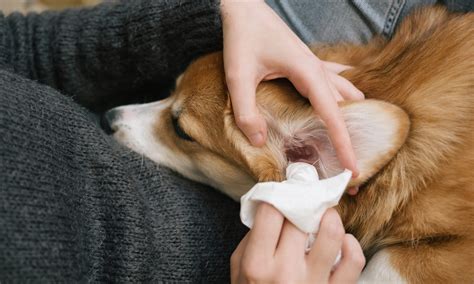
Dogs’ ears require regular care and cleaning to prevent infections, maintain hearing, and promote overall well-being. Understanding the anatomy of your dog’s ears is crucial for proper cleaning techniques.
1. Anatomy of a Dog’s Ear
A dog’s ear consists of three main parts:
- External Ear (Pinna and External Ear Canal): The visible part of the ear that collects sound waves.
- Middle Ear (Tympanic Cavity): Contains the eardrum and ossicles (tiny bones that transmit sound).
- Internal Ear (Vestibular System): Responsible for balance and hearing.
2. Signs of Ear Problems in Dogs
Ear problems in dogs are common and can manifest through various signs:
- Shaking the head excessively
- Scratching at the ears
- Redness or inflammation of the ear canal
- Discharge from the ear (ranging from brown to black or yellow to white)
- Odor from the ears
- Loss of balance or hearing
3. Prevention of Ear Infections in Dogs
Preventing ear infections is essential for maintaining your dog’s ear health. Consider these measures:
- Regular Ear Cleaning: Clean your dog’s ears every 1-2 weeks to remove excess wax and debris.
- Check Ears Regularly: Inspect your dog’s ears weekly for signs of infection or irritation.
- Prevent Water in Ears: Keep your dog’s ears dry by avoiding swimming in unclean water and using earplugs during baths.
- Control Allergies: Manage allergies that can trigger ear irritation and inflammation.
4. How to Clean Your Dog’s Ears Safely
Materials:
- Ear cleaning solution (veterinary-recommended)
- Gauze pads or cotton balls
- Treats for reinforcement
Step-by-Step Guide:
- Prepare Your Dog: Place your dog in a comfortable position and have treats nearby.
- Apply Cleaning Solution: Gently squeeze a small amount of ear cleaning solution into the ear canal.
- Massage and Drain: Massage the base of the ear for 15-20 seconds to distribute the solution. Allow your dog to shake their head to drain excess liquid.
- Wipe Clean: Use gauze pads or cotton balls to wipe away any remaining solution and debris from the external ear canal.
Tips:
- Never use Q-tips in your dog’s ears as they can push debris further into the canal.
- Clean only the visible part of the ear canal; avoid reaching too far.
- If you encounter resistance or your dog shows discomfort, discontinue cleaning and consult a veterinarian.
5. Troubleshooting Ear Infections in Dogs
If your dog experiences signs of an ear infection, immediate treatment is crucial.
Symptoms:
- Persistent discharge
- Severe redness and inflammation
- Odor
- Head tilting
- Loss of hearing
Treatment:
- Veterinary Consultation: Consult a veterinarian for proper diagnosis and prescribed medication.
- Medication: Antibiotics, antifungals, or anti-inflammatory medications may be prescribed.
- Cleaning and Bandaging: Your veterinarian may perform thorough ear cleaning and recommend using an Elizabethan collar to prevent scratching.
6. Benefits of Proper Ear Care for Dogs
Regular ear care provides numerous benefits for dogs:
- Prevention of ear infections
- Improved hearing ability
- Enhanced comfort
- Stronger bond between dog and owner
7. Conclusion
Proper ear care is essential for maintaining the health and well-being of your dog. By understanding your dog’s ear anatomy, signs of ear problems, and effective cleaning techniques, you can prevent infections, improve hearing, and enhance your dog’s overall quality of life. Remember to consult a veterinarian for professional guidance and prompt treatment of any ear issues.
Additional Tips:
- Frequency: Clean your dog’s ears every 1-2 weeks or more frequently if they have a history of ear infections.
- Grooming: Regularly remove excess hair from around your dog’s ears to prevent buildup and infection.
- Breed Considerations: Some breeds, such as Poodles and Basset Hounds, are more prone to ear infections due to their hanging ears.
- Monitoring: Observe your dog’s ears for any changes in appearance or behavior.
- Professional Cleaning: If you are uncomfortable cleaning your dog’s ears yourself, seek professional assistance from a groomer or veterinarian.
Common Questions:
Q: How often should I clean my dog’s ears?
A: Every 1-2 weeks, or more frequently if they have a history of ear infections.
Q: What is the best ear cleaning solution for dogs?
A: Use a veterinary-recommended ear cleaning solution that is specifically formulated for dogs.
Q: Can I use human ear cleaning solution on my dog?
A: No, human ear cleaning solutions can be harmful to dogs.
Q: What are the symptoms of an ear infection in dogs?
A: Shaking the head excessively, scratching at the ears, discharge from the ear, redness, and odor.
Q: What should I do if my dog has an ear infection?
A: Consult a veterinarian immediately for proper diagnosis and treatment.





















